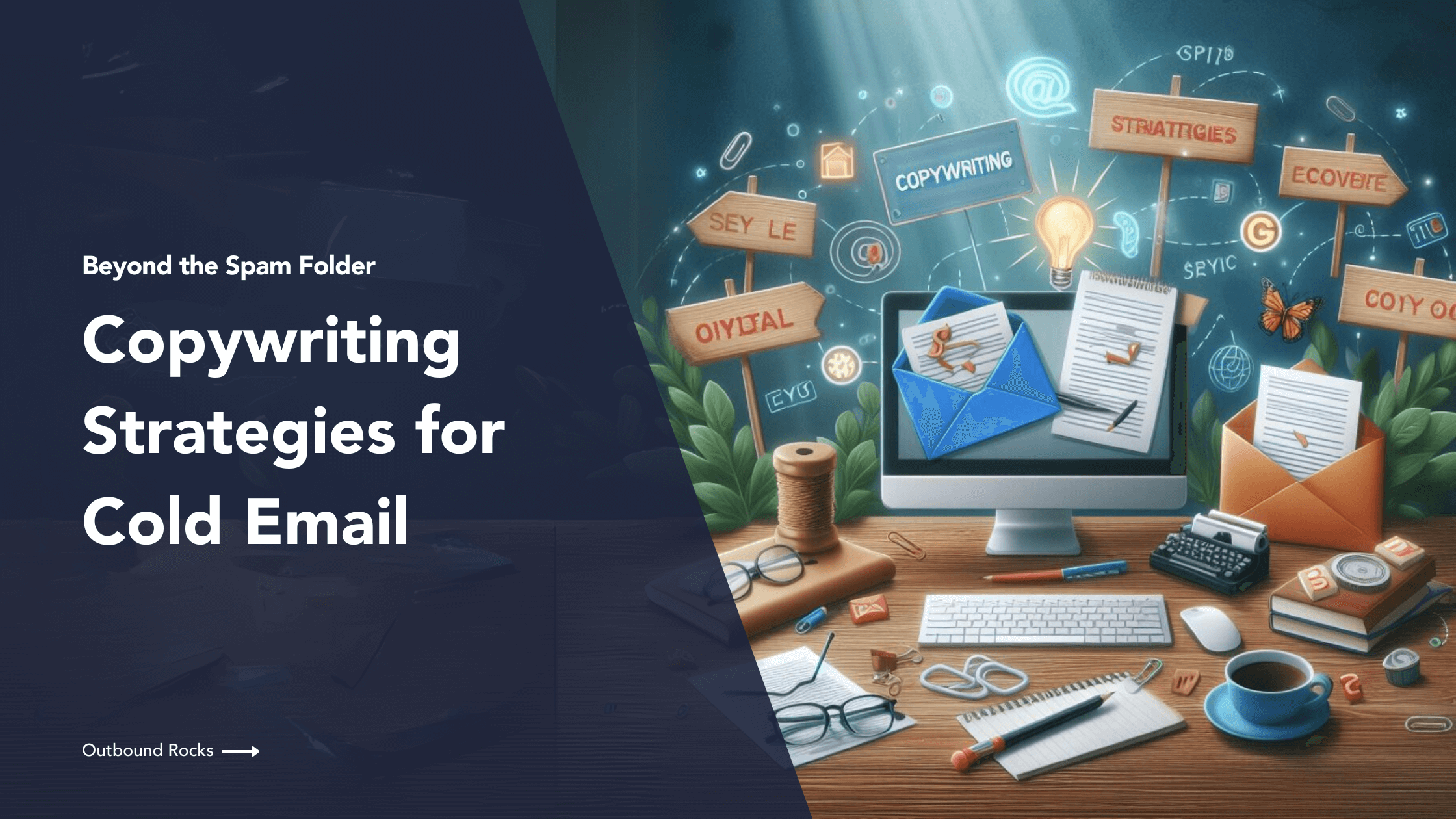Struggling to get your cold emails opened and clicked?
If you want to engage your audience, you need to master the art of cold email copywriting.
Often relegated to the depths of spam folders, cold emails are a powerful tool for building relationships and driving sales.
But crafting emails that generate real interest takes more than a friendly greeting and a generic call to action.
That’s where the magic of copywriting comes in.
In this article, we’ll discuss the best practices for writing compelling cold emails that get opened, read, and acted upon.
So get ready to ditch the templates and embrace the power of persuasive writing!
TABLE OF CONTENTS
– What is Copywriting?
– What is a Cold Email?
– Best Copywriting Strategies for Cold Email
— 1) Tailored Message for Each Recipient
— 2) Short and Actionable Message
— 3) A Proper Introduction + Social Proof
— 4) Solution to Prospect’s Pain Points
— 5) Subtle yet Convincing Persuasion to Take Action
– Conclusions
What is Copywriting?
Copywriting is the art of creating compelling written content that evokes emotion, drives action, and persuades readers to achieve a desired outcome.
In the world of cold email, copywriting is your secret weapon for cutting through the noise and grabbing prospects’ attention.
By incorporating effective copywriting into your cold email strategy, you can achieve a number of benefits, including
- Increase open rates: a well-crafted subject line piques curiosity and entices recipients to open your email, giving you the opportunity to make your pitch.
- Improve engagement: compelling copy keeps readers engaged and fosters a sense of connection.
- Increase conversions: compelling copy guides readers toward the desired action, whether it’s scheduling a call, visiting your website, or making a purchase.
As you can see, it’s all about crafting messages that resonate with your audience, and offer a solution they can’t resist.
What is a Cold Email?
A cold email is an unsolicited message sent to a recipient who has no prior relationship with the sender.
We talk about cold emails a lot in our blog, so we recomend you read this articles for better undestarsing:
- The Ultimate Guide to Cold Emails (2023).
- Mastering Cold Email: 50 Subject Lines for Maximum Impact
- How to write a Cold Email: step-by-step guide
Best Copywriting Strategies for Cold Email
To succeed in your cold email campaigns, you need to apply the best copywriting strategies.
So get ready to ditch the templates and follow this steps in order to offer value while keeping the audience engaged.
1. Tailored Message for Each Recipient
Gone are the days of generic, one-size-fits-all cold emails. To truly capture attention and drive action, your message must be personalized for each individual recipient.
This means going beyond simply addressing them by name and taking the time to:
- Research their background and company: understand their industry, challenges, and current situation.
- Highlight specific pain points: identify their unique problems and how your solution directly addresses them.
- Personalize your language and tone: tailor your writing style to their industry, communication preferences, and level of formality.
By taking the time to craft a customized message, you demonstrate interest and understanding, which builds trust and makes your offer far more compelling.
2. Short and Actionable Message
Your cold email needs to be concise and to the point, grabbing the reader’s attention and quickly communicating your value proposition. We recommend these practices:
- Subject lines under 50 characters: Intrigue them without being cryptic.
- Email bodies under 300 words: Get to the point and avoid unnecessary fluff.
- Use bullet points and clear headings: Break up your text and make it easy to scan.
- Focus on a single call to action: Tell them exactly what you want them to do next.
Remember, less is often more. A short, punchy message is more likely to be read and acted upon, maximizing your chances of success.
3. A Proper Introduction + Social Proof
Your cold email needs to effectively introduce you and your company, establishing credibility and trust from the start. Achieve this by:
- Clearly stating your name and company name.
- Providing a brief description of your company and its expertise.
- Highlighting any relevant accomplishments, awards or testimonials.
- Including links to your website and social media profiles.
Social proof is also important. By providing testimonials from satisfied customers or highlighting partnerships with well-known brands, you add credibility and demonstrate the value you provide.
4. Solution to Prospect’s Pain Points
Your cold email must clearly demonstrate how your offering addresses the specific pain points of your target audience. You do this by:
- Understanding the key challenges they face.
- Highlighting how your solution directly solves or alleviates these challenges.
- Quantifying the benefits you offer with data, case studies, or testimonials.
- Focus on the positive impact your solution will have on their business or life.
By clearly demonstrating how your offering addresses their pain points, you motivate them to take action and engage with your offering.
5. Subtle yet Convincing Persuasion to Take Action
Persuasion needs to be subtle and non-pushy, focusing on:
- Highlighting the benefits of taking the next step.
- Providing a clear and simple call to action.
- Creating a sense of urgency or scarcity.
- Using persuasive language and psychological triggers such as social proof or FOMO (fear of missing out).
Remember, the goal is to move them to action, not to force them to make a decision.
Conclusions
By incorporating these cold email copywriting strategies, you can dramatically increase your chances of success.
But you’ll also need an all-in-one customer acquisition system that allows you to build personal connections through hyper-personalized outreach email campaigns.
Outbound Rocks is that solution.
Fill out the form below to try it for free!
